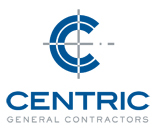In most major cities, there is a shortage of land for new construction. As a result, high-rise buildings supply the demand for residential spaces. If you find yourself wanting to reside in an urban setting and desire a dwelling with high-end custom amenities, it is a good idea to find a team with the experience to successfully realize your city lifestyle. Begin your search with an understanding that urban custom home construction in confined spaces requires careful planning.
Contemporary Living Room by Dallas Interior Designers & Decorators Traci Connell Interiors
When working in an urban high-rise, planning needs to begin as early as possible. Planning efforts need to consider staging, access and physical construction in an occupied and operational site. The custom home project team needs to be sensitive to planning, procuring and executing work to minimize or eliminate impact to your neighbors, as well as, the building’s operations. The following are key areas to consider for home construction in urban environments:
- Be Flexible: The team needs to roll with the punches when it comes to dealing with permitting and demolition, to accommodate the changes that are an inevitable part of any urban custom home project.
- Strong Team Alliance: A strong alliance between the owner, architect, engineer and the building team is essential. Evidence shows that upgrades, maintenance and new construction can achieve measurable results and improve reliability with a strong team commitment to making the project work. Measured results help foster a long-term alliance that, through ongoing enhancements, will continue to ensure reliable results. The entire team needs to work together on a plan that determines project phasing, work flow, temporary access and material lay down areas to ensure access is always open to neighbors and building facilities personnel. In addition, it is best to ensure all building trade contractors are familiar with the phasing and workflow and follow instructions for access.
- Neighbor Relations and Communications: The team should make a point to actively communicate with neighbors at the project location and respond to their concerns in a timely fashion. The team’s attention to potential construction noise coupled with a keen sense for realizing the design of the new space are the basics for succeeding with both neighbors and project stakeholders alike.
- Eliminate the Element of Surprise: When building your custom home in an urban environment, clear communication is essential and avoiding surprises is the best way to kick-off a great relationship with your neighbors. It is a good idea to create a disruption avoidance plan with all team members that can be executed without change unless agreed in advance. The reason for this approach is to eliminate surprises for all stakeholders.
- Traffic Flow: The growing size of the population of urban areas, the narrow roads, and vehicle congestion are challenges typically associated with urban environments. The team needs to plan for potential traffic challenges that are mostly exacerbated by the concentration of multiple working spaces in the same area and ensure traffic is essentially one-directional during the morning and evening peak periods.
- Unyielding Commitment to Safety: An unyielding commitment to safety is imperative for the entire team. The team needs to be familiar with safety orientations, safe work plans, prepared for daily jobsite inspections and construction testing and ongoing training as part of their day-to-day routine. A “lessons learned” should be performed for even the most minor incidents.
- Equipment and Materials Procurement and Staging: Personnel needs to understand how to work in confined workspaces, rigging and lifting methods, flagging and critical lift plans.
Whether you are living in an urban environment or a suburban community, every custom home project presents different challenges. With an understanding of what these challenges may be, you should be able to find a qualified team that addresses the key areas of concern.


